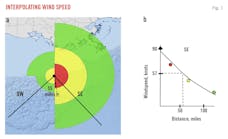Governments and businesses trying to develop tight oil and gas resources could face intense competition for water that would be used in hydraulic fracturing, the World Resources Institute said in a recent report. It found that 38% of the world’s tight shale resources face high to extremely high water stress or arid conditions.
The Sept. 2 report, “Global Shale Gas Development: Water Availability,” is the first publicly available water availability analysis across shale gas and tight oil resources worldwide, the environmental organization said. Its research also indicated that water availability could limit shale resource development on every continent except Antarctica.
“With 386 million people living on land above shale plays, governments and business face critical choices about how to manage their energy and water needs,” said WRI Pres. Andrew Steer. “Energy development and responsible water management must go hand in hand.”
The report ranked water stress across the 20 countries with the largest shale resources. It also evaluated water availability for every shale play in the 11 countries either pursuing or most likely to use fracing: Algeria, Argentina, Australia, Canada, China, Mexico, Poland, Saudi Arabia, South Africa, the UK, and the US.
Water availability and shale resources vary from country to country, making fracing’s potential unique in almost every location, the report noted. It also said the potential for expansion is huge: Known shale gas deposits worldwide add 47% to global technically recoverable gas resources, and underground stores of tight oil add 11% to the world’s technically recoverable oil resources.
“With many countries already facing arid conditions and high water stress around the globe, this report can help to ensure that there’s enough water available for industries, farms, and people, even if shale development advances,” said Paul Reig, a WRI associate and the report’s lead author. “Thankfully, there are smart and practical steps that countries and businesses can take to help reduce the water risks posed by future shale development.”
The report makes four recommendations:
• Conduct water risk assessments to understand local water availability and reduce business risk.
• Increase transparency and engage local regulators, communities, and industry to minimize uncertainty.
• Ensure adequate water governance to guarantee water security and reduce regulatory and reputational risks.
• Minimize freshwater use and engage in corporate water stewardship to reduce impacts on water availability.
WRI said that seven indicators were used to evaluate water availability and the associated business risks for shale development: water stress, water supply variation among months of the year, drought severity, groundwater depletion rates, largest water user, population density, and depth of shale reserves.
Contact Nick Snow at [email protected].

Nick Snow
NICK SNOW covered oil and gas in Washington for more than 30 years. He worked in several capacities for The Oil Daily and was founding editor of Petroleum Finance Week before joining OGJ as its Washington correspondent in September 2005 and becoming its full-time Washington editor in October 2007. He retired from OGJ in January 2020.
